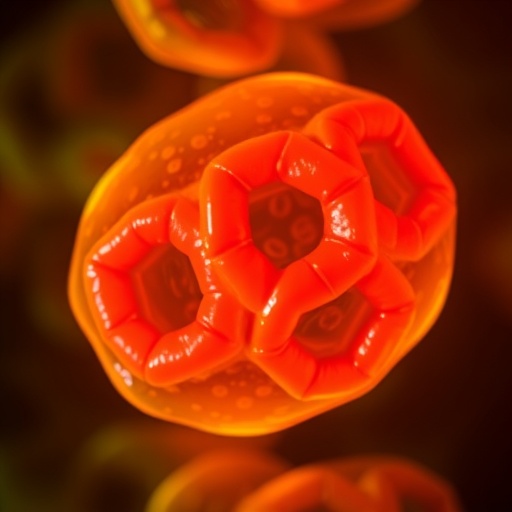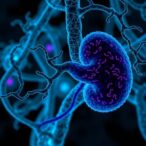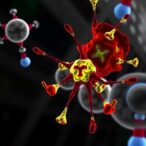
In a groundbreaking study published in Nature Communications, researchers led by Feng, Wang, Gao, and colleagues have unveiled a novel pathway by which adipocyte-specific Claudin 5 (CLDN5) plays a pivotal role in regulating thermogenesis and energy expenditure. The team’s findings elucidate how CLDN5 modulates the expression of interleukin 10 (IL10), a cytokine traditionally associated with anti-inflammatory processes, to influence metabolic homeostasis and energy balance. This fresh perspective on the molecular crosstalk between adipose tissue and immune signaling could pave the way for innovative therapies targeting obesity and metabolic disorders.
For decades, scientists have sought to understand the mechanisms governing energy expenditure, particularly the biological processes that enable the body to convert calories into heat—a process known as thermogenesis. Brown and beige adipocytes, specialized cells within adipose tissue, have long been recognized for their contribution to heat production through mitochondrial uncoupling proteins. Yet, the intricate regulation of thermogenic activity and its integration with immune signals remained partially elusive. The current study delivers compelling evidence positioning CLDN5, a tight junction protein, at the center of adipocyte-driven thermogenic regulation, shifting the paradigm of metabolic research.
CLDN5, a member of the claudin family, is traditionally known for its role in maintaining tight junction integrity in vascular endothelial cells. Distinctively, Feng et al. discovered that CLDN5 is highly expressed in adipocytes, where it exerts significant influence over cellular signaling cascades affecting energy metabolism. Using a combination of genetically engineered mouse models and advanced molecular techniques, the research team demonstrated that adipocyte-specific deletion of CLDN5 results in impaired thermogenesis, reduced energy expenditure, and increased susceptibility to diet-induced obesity.
.adsslot_2ZzcktUh5Y{width:728px !important;height:90px !important;}
@media(max-width:1199px){ .adsslot_2ZzcktUh5Y{width:468px !important;height:60px !important;}
}
@media(max-width:767px){ .adsslot_2ZzcktUh5Y{width:320px !important;height:50px !important;}
}
ADVERTISEMENT
One of the most striking findings of the study is the mechanistic link between CLDN5 and IL10, an anti-inflammatory cytokine previously not implicated deeply in adipocyte metabolic function. The authors provide strong evidence that CLDN5 promotes thermogenesis by upregulating IL10 expression in adipose tissue, which in turn modulates metabolic pathways essential for maintaining energy balance. This interplay suggests a novel immunometabolic axis whereby adipocyte CLDN5 fosters a favorable environment for enhanced energy dissipation through IL10-mediated signaling.
Further mechanistic insights revealed that IL10 activates downstream pathways involved in mitochondrial biogenesis and respiratory capacity within adipocytes. This activation boosts the thermogenic program, leading to increased heat production and energy expenditure. The dual role of IL10 as both a modulator of immune responses and as a metabolic regulator challenges the traditional view separating inflammation from energy metabolism and underscores the complexity of adipose tissue physiology.
Crucially, the study highlights the physiological relevance of this pathway in vivo. Mice lacking CLDN5 in adipocytes exhibit decreased oxygen consumption rates and diminished thermogenic gene expression, rendering them less capable of adapting to cold exposure. Conversely, elevating IL10 levels in these animals partially rescued the thermogenic deficit, affirming that IL10 acts downstream of CLDN5 to facilitate energy utilization. These findings position CLDN5 and IL10 as key modulators within an integrated network governing thermogenic capacity.
The researchers also explored the potential translational implications of their findings. Given the global prevalence of obesity and metabolic syndrome, understanding the molecular underpinnings of energy expenditure is paramount for developing effective therapies. Targeting the CLDN5-IL10 axis could provide a therapeutic strategy to boost thermogenesis, enhance calorie burning, and ultimately mitigate obesity-related complications. Importantly, this approach may avoid the pitfalls of conventional weight-loss drugs, which often have significant side effects or limited efficacy.
At the molecular level, the research employed transcriptomic and proteomic analyses to chart alterations in gene and protein expression following CLDN5 ablation. The data unveiled a suppression of key thermogenic markers such as UCP1, PGC1α, and CPT1, concomitant with diminished mitochondrial function. These molecular signatures corroborate the physiological defects observed, solidifying the link between CLDN5 expression, IL10 signaling, and the molecular machinery driving thermogenesis.
Additionally, the study delved into the cellular localization and interaction partners of CLDN5 within adipocytes. Immunostaining and co-immunoprecipitation assays revealed that CLDN5 localizes predominantly at the cell membrane but also engages with intracellular signaling molecules, possibly influencing IL10 transcriptional regulation. This multifaceted role of a tight junction protein within non-epithelial cells opens new avenues for investigating claudins beyond their classical functions in barrier formation.
Interestingly, the research also sheds light on how inflammatory states may intersect with metabolic health. Chronic low-grade inflammation in obesity is well-documented, yet the interplay between inflammation and energy homeostasis is complex. The CLDN5-IL10 axis appears to function at the nexus of this interplay, where anti-inflammatory signaling coincides with the promotion of thermogenesis, suggesting that modulation of immune pathways within adipose tissue can have profound metabolic consequences.
The implications of CLDN5’s role extend to age-related metabolic decline and insulin resistance. Given that thermogenic capacity decreases with age, the findings hint at the possibility that dysregulation of adipocyte CLDN5 expression or function could contribute to metabolic deterioration over time. Future research could explore whether restoring or enhancing CLDN5 activity might counteract such declines and improve metabolic health in aging populations.
From a broader perspective, these discoveries urge a reevaluation of adipose tissue’s role within systemic physiology. Rather than a mere fat storage depot, adipose tissue emerges as a dynamic and immunologically active organ, wherein proteins such as CLDN5 orchestrate complex metabolic programs. This enriches our understanding of metabolic diseases and highlights that therapeutic strategies should consider the dual metabolic and immune functions of adipocytes.
The study employed cutting-edge methodologies, including CRISPR-Cas9 gene editing to generate adipocyte-specific CLDN5 knockout models, single-cell RNA sequencing to capture cell-type-specific transcriptional changes, and in vivo metabolic phenotyping to assess whole-body energy expenditure. Such comprehensive approaches enabled the dissection of this novel immunometabolic pathway with remarkable precision.
Taken together, Feng et al.’s work represents a significant leap forward in metabolism research, illuminating a previously uncharted pathway linking a structural protein traditionally associated with tight junctions to cytokine-mediated regulation of thermogenesis. Their findings hold profound potential not only for understanding fundamental biology but also for inspiring breakthrough treatments addressing metabolic diseases that affect millions globally.
As obesity continues to pose a formidable public health challenge, insights such as these renew optimism that targeted manipulation of adipose tissue pathways can yield effective, safe, and durable therapeutic options. By decoding the language spoken between adipocytes and immune molecules like IL10, researchers are steadily unlocking the secrets of how the body maintains energy balance, offering hope for a healthier future.
Subject of Research: Role of adipocyte Claudin 5 (CLDN5) in regulating thermogenesis and energy expenditure through interleukin 10 (IL10) signaling.
Article Title: Adipocyte CLDN5 promotes thermogenesis and energy expenditure through regulation of IL10 expression.
Article References:
Feng, K., Wang, W., Gao, X. et al. Adipocyte CLDN5 promotes thermogenesis and energy expenditure through regulation of IL10 expression. Nat Commun 16, 6151 (2025). https://doi.org/10.1038/s41467-025-61371-3
Image Credits: AI Generated
Tags: adipocyte-specific Claudin 5adipose tissue immune signalingbrown and beige adipocytes functioncytokines and metabolic homeostasisenergy balance and metabolisminterleukin 10 regulationmetabolic disorders and therapiesmitochondrial uncoupling proteins rolenovel pathways in obesity researchobesity treatment innovationsthermogenesis and energy expendituretight junction proteins in metabolism



